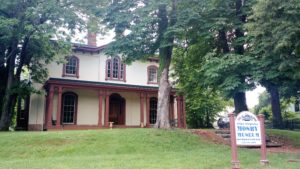
John S. Mosby House – the starting point
Rancho Russo is headquartered in the bucolic countryside of Fauquier County. Out here school has been dismissed for summer and the previously incapacitated Russo family members have returned to their pre-operative states of health (for better or worse as that may be). This has afforded the former chauffeur, nurse, physical therapist, housekeeper, cook, bottle-washer & medical appointment scheduler the opportunity to resume her imaginary career as your most beloved travel enthusiast. The cancellation of a Spring Break vacation to assume the aforementioned duties required an increase in meditation, contemplation and reflection in order to keep my Chi freely flowing but now I am ready for adventure!
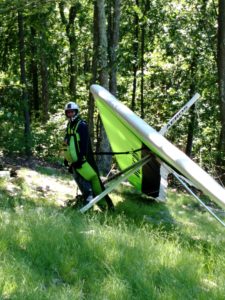
OK, maybe not this much adventure.
I did just take advantage of the amazing sale Southwest Airlines had to book flights for our 40th wedding anniversary celebration trip to take place this October. We will also shortly be returning to the Orlando area to partake in our Summer family reunion, hit the beach for a while and return to New York to impose on the unbridled hospitality of my sister and brother-in-law. An absence of travel related activities requires a short jaunt to get those travel juices flowing again. I take for granted just how much my everyday landscape is often a vacation destination for others. There are so many things available in my own backyard that I have failed to take full advantage of so we decided that ‘there’s no place like home’ to poke that stagnant wanderlust spirit.

I love imposing on these 2
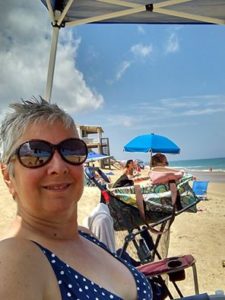
Here I come!
Damian received a booklet from school that detailed a Historic Fauquier County Scavenger Hunt that was centered around the Civil War related activities of the famed ranger John S. Mosby. I will now provide you with a cautionary warning: this post contains historical images and information that some may find politically incorrect or offensive. I can’t change history, folks. Nor do I want to do so. Wise readers will interpret events through the prism of the times in which they occurred, who was writing the information and to what purpose it served them.
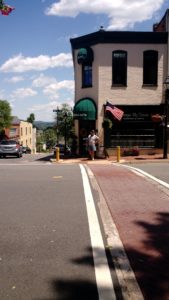
Main Street – Warrenton
We park our car at the Visitor’s Center in downtown Warrenton, Virginia and head off on foot through the historic district. Our mission is to find certain sights and answer questions related to our findings so that Damian can obtain a coveted t-shirt that reads: “Got Mosby?” on the front and “No – Mosby’s Got YOU!” on the back. (Sigh, . . whatever.) The first Confederate Officer to die in the Civil War was from Warrenton and Union troops often occupied Fauquier County. Significant battles occurred at Catlett Station, Thoroughfare Gap, Kelly’s Ford, Rappahannock Station, Upperville, Buckland and Auburn. The occupying Union forces allowed approximately 20% of the now freed slaves residing here to leave the county. The remaining Freedmen begin establishing their own churches, schools and villages. Rancho Russo is located on what used to be known as Little Africa on Rattlesnake Mountain. Where I live was originally a farming community founded by escaped and then freed slaves. The hub of this community was the Mount Paran Baptist Church which still exists and serves an active worship community of descendants. (A fascinating account of Little Africa can be found in the book: Blue Mountain Memories by Richard Long)
The 43rd Battalion Virginia Cavalry Company A became known as “Mosby’s Raiders”. Their use of guerilla warfare to disrupt communication and supply lines as well as their ability to continually elude pursuit and capture made them legends. Under the authority of General Robert E. Lee, this company was formed by John S. Mosby. We follow the trail out of the Visitor’s Center to arrive in front of the house where Mosby lived after the war. We are given the task to name the builder of the front gates at Brentmoor and quickly deduce that this scavenger hunt will not be a walk in the park. The worn medallion is about 4 inches off the floor on a piece of the gate. What we don’t yet know is that this hunt will take us over 6 hours to complete traversing 9 towns through 2 counties!
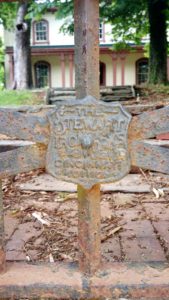
The Stewart Iron Works built the gate at Brentmoor
I’ll save you the history lesson and instead will delight you with the picturesque landscape and architecture that we encountered during this time. It was a cool day for June in Virginia topping off in the 70’s under crystal blue skies. Enjoy the scenery!
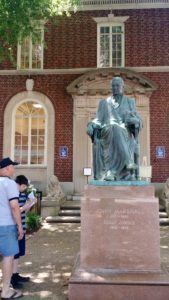
Fauquier resident Chief Justice John Marshall outside the courthose. We had to find what was in his right hand.
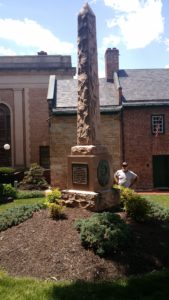
Mosby Monument – we had to finish a quote found on it.
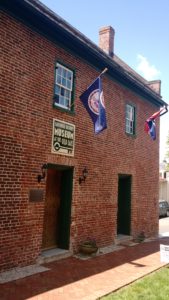
“When was the old jail built?”
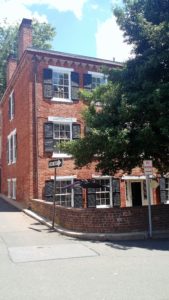
“What was the address of Mosby’s law office?”
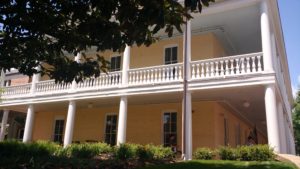
The old Warren Green Hotel building.
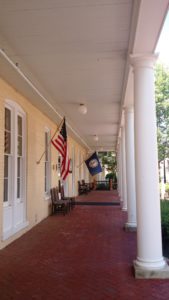
Hotel guests included:
Lafayette, James Monroe, Andrew Jackson,Henry Clay, Teddy Roosevelt and Wallis Simpson.
The residential area of the Warrenton Historical District contains many stately properties including the residence of Capt. John Q. Marr. This former Mayor of Warrenton and Sherrif of Fauquier County attended the Virginia Military Institute and was the first Confederate Officer to die in the Civil War.
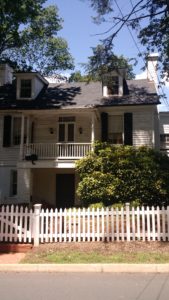
Marr House built in 1830
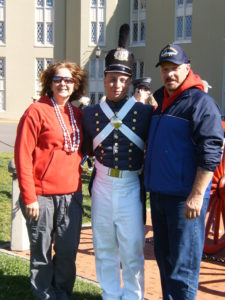
Another infamous Virginia Military Institute alum.
It is rumored that Col. Mosby was in a local barber shop during the War having a shave when Union soldiers entered in search of him. The sympathetic barber quickly covered his face in lather and they left empty handed. Mosby had many ‘close shaves’ during the War.
(Audible groan from reader.) The last stop of the tour in Warrenton was the local cemetery. A recent episode of vandalism brought national attention to Warrenton Cemetery when nearly 100 gravestones were knocked over or damaged. Restoration efforts are being spearheaded by the Fauquier Historical Society which is conducting fundraising efforts. We were sent to the Confederate Memorial located in the center of the cemetery to discover what sits atop the memorial then we were told to find Mosby’s gravesite.
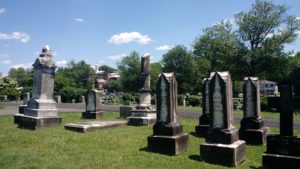
View of town from atop the Warrenton Cemetery.

You can’t miss it!
We ambled down rural back roads in The Plains to find the Five Points Intersection which was a popular meeting place for Mosby’s Rangers to congregate before a raid.

Abandoned old stone house seen on the back roads.
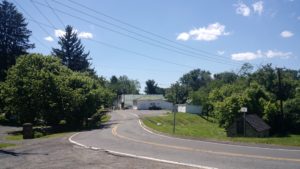
Store and Spring at the village of Atoka (formerly Rector’s Crossroads). Mosby assembled the Rangers at The Rector House here.
The Hathaway House (still a private residence) was where Mosby would stay with his wife during the War. One night while they were there Union troops arrived to search for him. He crawled out a rear window onto a branch of the tree that you can still see behind the house. He remained lying flat against that branch for 8 hours while the troops confiscated his horse and gear. After they finally left, he crawled back in the window. This was a story I was very familiar with and knew the house was somewhere in Fauquier so I was extremely excited to actually find it’s location! Although it’s location is pretty remote I’m sure the current residents tire of idiots like us milling about in front of it trying to capture an image. At least the family dog seemed not to appreciate our love of history.
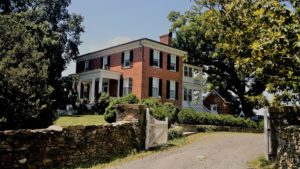
Hathaway House
The big tree in the back is where Mosby hid.
We also were taken through the town of The Plains proper. While we are quite familiar with the drinking and dining establishments located along the main street, I was unaware that The Plains was the site of the first Union Army camp in Fauquier. It is also the home of the Afro-American Historical Association of Fauquier County which contains a museum and research library containing artifacts and photos related to the county’s African-American history. We were asked to find out which slave ship a horrifying metal slave cage was from.
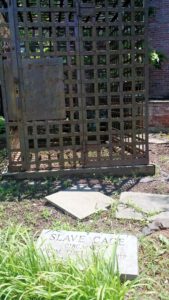
Slave cage from slave ship
“Veronica”.
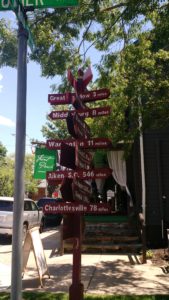
A sign post in The Plains that’s well known to locals.

Lavender adjacent to the post office in The Plains.
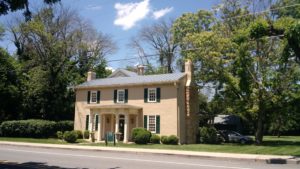
Dr. Clark’s house.
He sat on his porch whittling while the Union troops passed. He put a notch in his whittling stick for each artillery piece then sent the stick to the Confederates.
We crossed Goose Creek as we traversed the countryside. It’s source is my hometown of Linden, Virginia and the many streams that feed into it are an important source of water for local wildlife and livestock. The Goose Creek Bridge was built when Thomas Jefferson was President and is one of only four arched-stone bridges remaining in Virginia. This bridge played a role during the Battle of Upperville when J.E.B. Stuart’s cavalry made a stand against Union cavalry. It is currently part of a recreational area that is maintained by the Loudoun Garden Club. We hiked across it and down the trail.
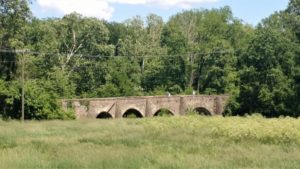
Goose Creek Bridge

Goose Creek
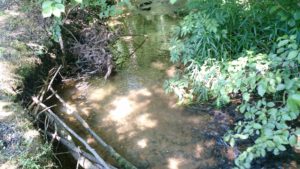
Goose Creek tributary
Through Upperville we coursed and there the setting up for the Upperville Colt & Horse Show was in full swing. This is the oldest horse show in America commencing in 1853. The Mosby Heritage Area encompasses much of the Virginia Hunt country. Heading from Warrenton to The Plains we passed Great Meadow. This Field Events Center hosts both the Virginia Gold Cup races and the International Gold Cup Races. These are steeplechase events that create a Kentucky Derby atmosphere here each Spring and Fall. Prior to the establishment of formal racecourses riders would race across the countryside going from church steeple to church steeple jumping over fences, streams and logs along the route. Hence, the term “steeplechase”. (We locals attend to get drunk outside, wager and laugh at the elite from Fairfax and Washington D.C. while they try to negotiate muddy fields in their Jimmy Cho’s.)

Tally-ho!
In a region known for breeding fine horses, Mosby’s men had the finest of the fine. We once met a gentleman who was in his 90’s and a life-long resident of Rectortown. He told us that when he was a boy he would drive horses that were locally bred from the farm fields down to the railroad station at Rectortown. The horses would be boarded onto freight cars and shipped north to Saratoga Springs in New York for the racetrack. All raiders had at least 2 horses and Mosby was said to have six. One of our neighbors, who was a lawyer known as “Hawk”, used to lead trail rides at Marriott Ranch with my son. His great, great grandfather was a local horse trader. Mosby’s men stole some of his horses to which he rode into Warrenton and told the Union forces which local house Mosby was staying in that night. That was supposedly the night Mosby crawled out the window to spend the night in a tree.
Ashby’s Gap was a through route over the Blue Ridge into the Shenandoah Valley and this took us through to the tiny village of Paris. There are some stunning views as you drive out this way. The Ashby Inn anchors Federal Street and is an upscale restaurant and Inn. It has been maintained meticulously in it’s 1800’s charm with many residences, buildings and structures original from that time. It’s a charming walk. We then hit Route 17, also known as Winchester Road down passed Sky Meadows State Park.
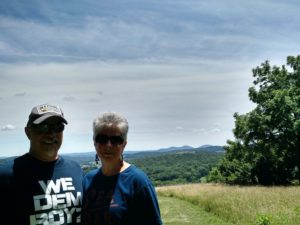
Sky Meadows State Park
Onward through Delaplane and into the Ashville Historic District we plodded. Ashville was founded as an African-American community in 1869 after 2 sisters, Harriet and Catherine Ash, willed about 150 acres of land to 2 of their former slaves. This was an amazing act of generosity at this time. Land ownership represented enormous opportunities for Freedmen. Jacob Douglas, one of those slaves, deeded land in 1874 to found the First Ashville Baptist Church. It was rebuilt in 1899 on the original site.

Cornerstone of the rebuilt
Ashville Baptist Church.
Back out on Ashville Road we pass Oak Hill, which was the house built by Chief Justice John Marshall and was used as his vacation home. Then we arrive at a familiar location for us, the Emmanuel Episcopal Church. Built in 1859 on land donated by Justice Marshall’s granddaughter, the church served as both a Union & Confederate hospital. It is our official polling place and we come here to vote each time an election is held. We are tasked to discover what color is inside of the bell in the bell tower.
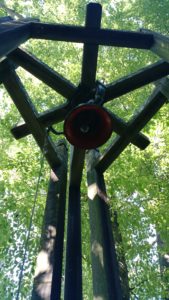
It’s red.
Our final stop is the town of Marshall. Formerly known as Salem, this was the original hub of activity for us when we moved to Fauquier County. My kids went to elementary and middle school here as will Damian. Don and Darren work here. Our first Fauquier friends live here. We Trick or Treat here. We attended the Fireman’s Carnival here and the Christmas Parade. We learned how to be somewhat respectable country folks here. This town will be the next big thing happening in Fauquier County. Several new housing developments and a gentrified Main Street will forever change this place I have learned to love. Is that a good thing? Time will tell. The secret we have closely guarded about what a great place Fauquier is to live in is about to get out. This will pose new challenges and decisions we will have to make: how do we balance the environment we cherish with the need for more utilites and communication services? Our already stressed and often inadequate public school system will need more funding to be able to attract the teachers who are not coming here or leaving in droves for neighboring counties that offer more attractive options. We arrive at Old Schoolhouse #18. This school built in 1887 was the first public school built in Northern Fauquier. Orginally a white-only school until 1908, it then was used by African-American children being educated through the Salem Baptist Church. In 1964 it was closed as those students moved to a still segregated school near Rectortown.
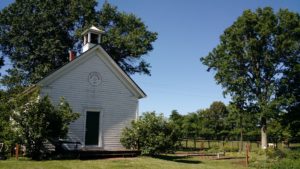
Old Schoolhouse #18
Mosby disbanded his Rangers in a field along what is today, Salem Avenue. It is a somewhat commercial area with the Fire Station and its old Carnival grounds on one end and the burned out Marshall Ruritan Club anchoring it at the other end. Most of the rangers surrendered as individuals so as to obtain paroles that would enable them to be free. Mosby turned himself in to Federal authorities in 1865 but continued to be hassled until in 1866 he received special papers from General Grant exempting him from arrest and granting him safe conduct. He and Grant became good friends and Mosby became Grant’s campaign manager when he ran for President. Prior to his extensive involvement in national politics he resumed his law practice in Warrenton at the end of the War. If Mosby and Grant could put their differences aside and cultivate a lasting friendship there’s hope for us all.
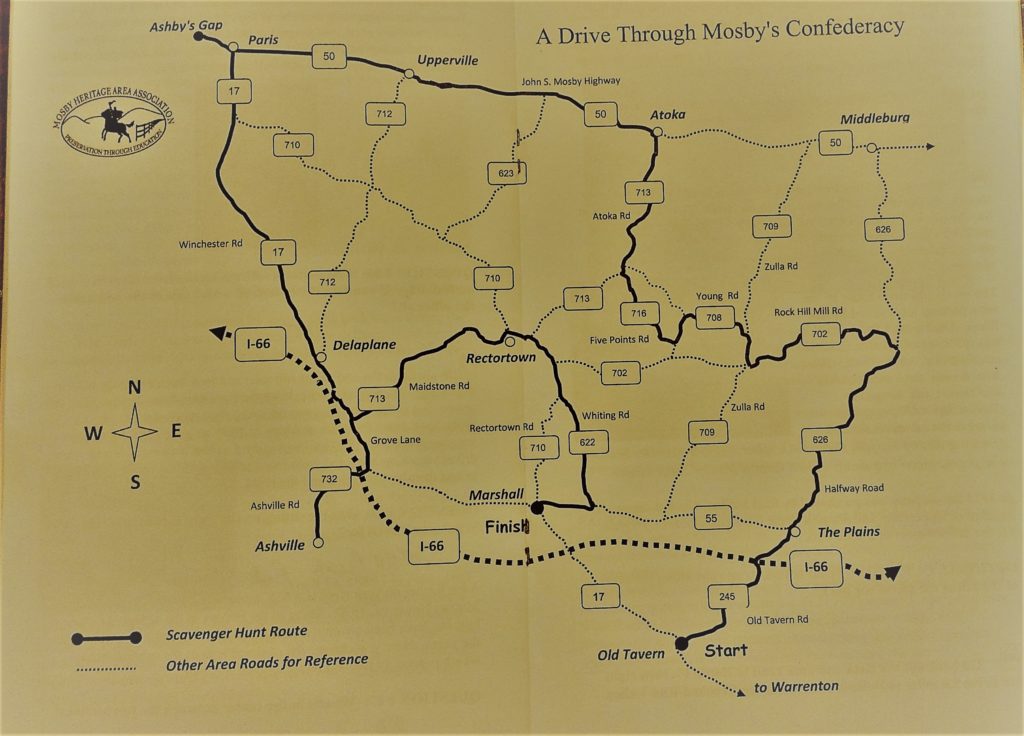
Our scavenger hunt route.
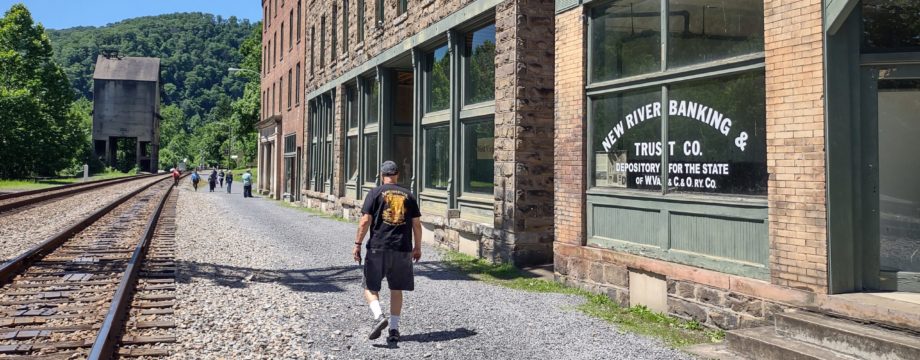
 Follow
Follow
2 Responses to Scavenger Hunt